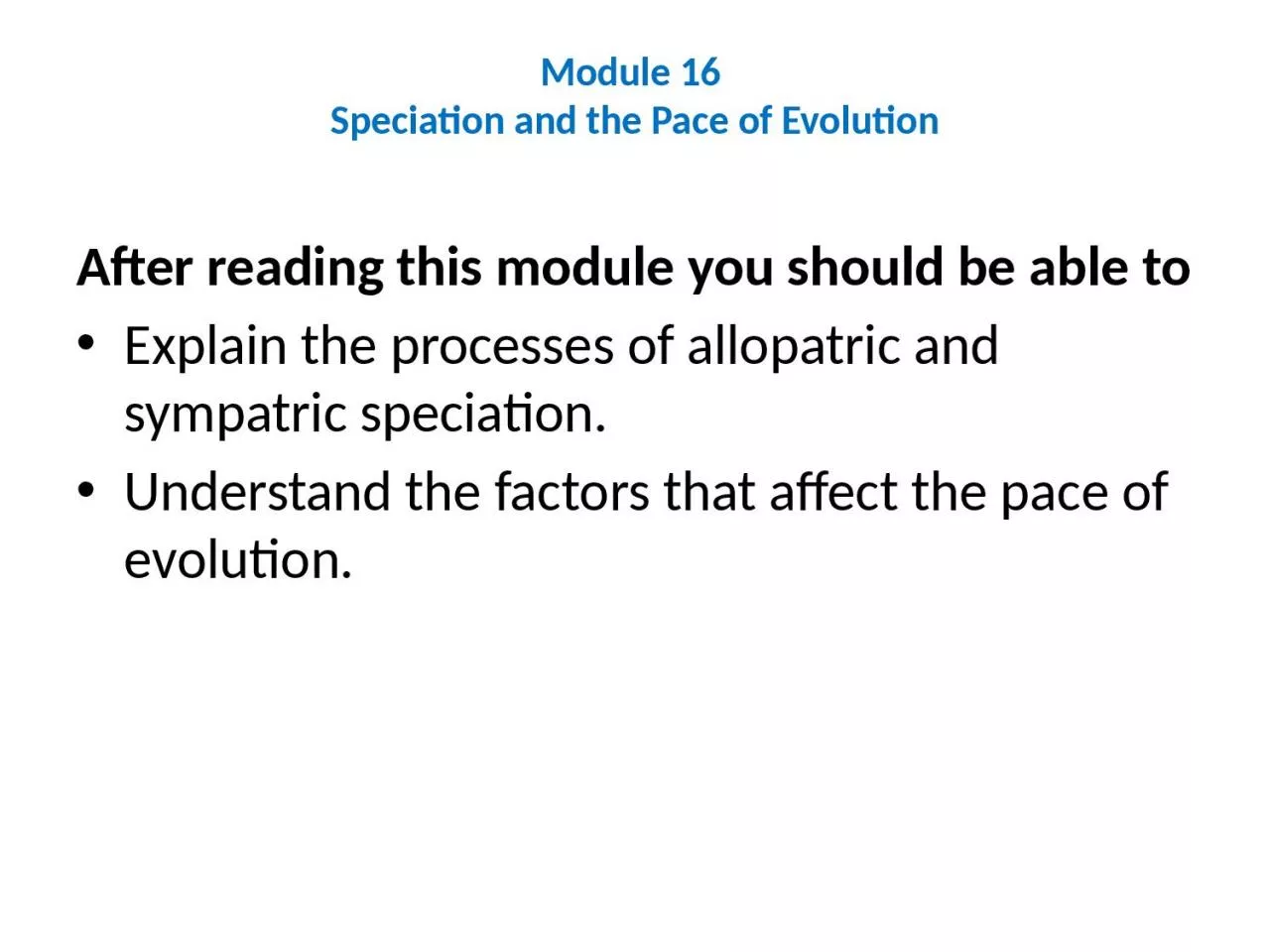

After reading this module you should be able to Explain the processes of allopatric and sympatric speciation U nderstand the factors that affect the pace of evolution Speciation can be allopatric or sympatric ID: 1025303
Download Presentation The PPT/PDF document "Module 16 Speciation and the Pace of E..." is the property of its rightful owner. Permission is granted to download and print the materials on this web site for personal, non-commercial use only, and to display it on your personal computer provided you do not modify the materials and that you retain all copyright notices contained in the materials. By downloading content from our website, you accept the terms of this agreement.
1. Module 16 Speciation and the Pace of EvolutionAfter reading this module you should be able toExplain the processes of allopatric and sympatric speciation.Understand the factors that affect the pace of evolution.
2. Speciation can be allopatric or sympatricNew species commonly evolve through two processes:Allopatric speciation The process of speciation that occurs with geographic isolation.Sympatric speciation The evolution of one species into two, without geographic isolation.
3. Allopatric SpeciationGeographic isolation Physical separation of a group of individuals from others of the same species.Reproductive isolation The result of two populations within a species evolving separately to the point that they can no longer interbreed and produce viable offspring.
4. Allopatric SpeciationAllopatric speciation. Geographic barriers can split populations. Natural selection may favor different traits inthe environment of each isolated population, resulting in different adaptations. Over time, the two populations may become so geneticallydistinct that they are no longer capable of interbreeding.
5. Sympatric SpeciationUsually happens through polyploidySympatric speciation. Flowering plants such as wheat commonly form new species through the process of polyploidy, an increase in the number of sets of chromosomes beyond the normal two sets. (a) The ancestral einkorn wheat (Triticum boeoticum) has two sets of chromosomes and produces small seeds. (b) Durum wheat (Triticum durum), which is used to make pasta, was bred to have four sets of chromosomes and produces medium-sized seeds. (c) Common wheat (Triticum aestivum), which is used mostly for bread, was bred to have six sets of chromosomes and produces the largest seeds.
6. The pace of evolution depends on several factorsA species can survive an environmental change if it can quickly evolve adaptations to new conditions. Slow rates of evolution occur when a population has long generation times or contains low genetic variation. Evolution by artificial selection can be very rapid.Genetically modified organism (GMO) An organism produced by copying genes from a species with a desirable trait and inserting them into another species.
7. Let Check It Out!Anole LizardsEvolution of Lizards Virtual LabOver the next few days you will be working to complete the 4 modules relating to the evolution of lizards. Make sure to save your progress, you will need to log in using your bmchsd.org account. Once completed, you will be asked to print out your results sheet and hand it in.